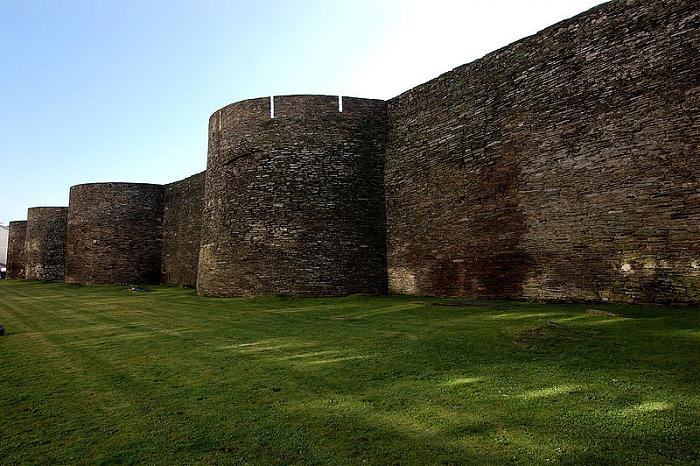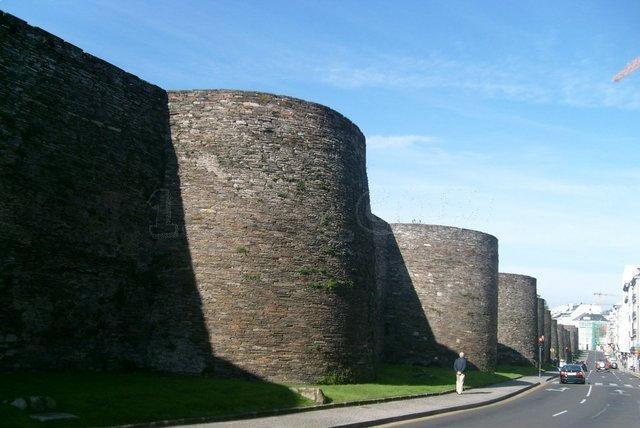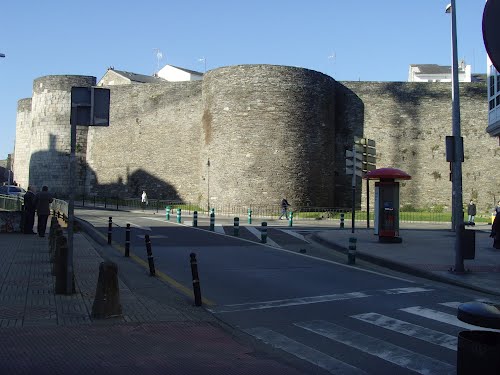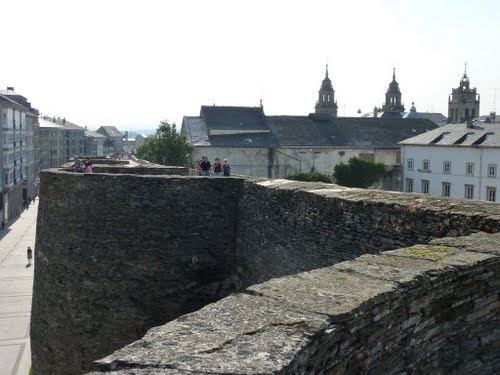The Roman walls of Lugo were constructed in the 3rd century and are still largely intact today, stretching over 2 kilometers around the historic centre of Lugo in Galicia. The fortifications were inscribed on UNESCO's World Heritage List in late 2000 as "the finest example of late Roman fortifications in western Europe." The walls have also held Spanish monument status since 1921. In 2007, the walls were twinned with the Great Wall of China during a ceremony attended by China's then-ambassador to Spain, Qiu Xiaoqi.
A walkway over the walls now allows visitors to stroll along the entire length. The town also has a visitor's centre dedicated to the walls, the Centro de Interpretación de la Muralla. Since the inscription of the walls on the World Heritage List in 2000, Lugo holds a popular festival called Arde Lucus each year to celebrate its Roman past.
The city walls were built between 263 and 276 A.D. to defend the Roman town of Lucus Augusti against local tribesmen and Germanic invaders. The walls formed part of a complex of fortifications which also included a moat and an intervallum. The entire length of the walls is around 2,120 m, enclosing an area of 34.4 hectares. Not all of the town was enclosed by walls: much of the southeastern part of the town remained unprotected, while in other places unused areas were enclosed by walls.
The width of the walls is around 4.2 m and the height of the walls varies between 8 and 12 m. The walls consist of internal and external stone facing with a core of earth mixes with gravel, pebbles and worked Roman stone recycled from demolished buildings, cemented with water.
There are 10 gates in the walls: five dating to Roman times and five added after 1853 to accommodate the expanding town population. The best preserved of the five original gates are the Porta Falsa and the Porta Mina, the latter of which still has the original vaulted arch set between two towers. Five stairways and a ramp provide access to the parapet walk over the walls. Within the walls, a number of double staircases provide access to the towers from the parapet walk.
Of the original towers, 49 are still intact, and another 39 have partially survived. The towers were built at irregular intervals along the walls. They consist of two stories and are mostly semicircular; a few are rectangular. The gaps in the wall for the towers vary in length from 5.35 m to 12.80 m. Different materials were used for the construction of the towers. Often the base of the tower was constructed of dressed granite, with the remainder in slate.
During the Middle Ages, pilgrims passed through the gates of the Lugo walls, particularly Porta Mina, on their way to Santiago de Compostela.







